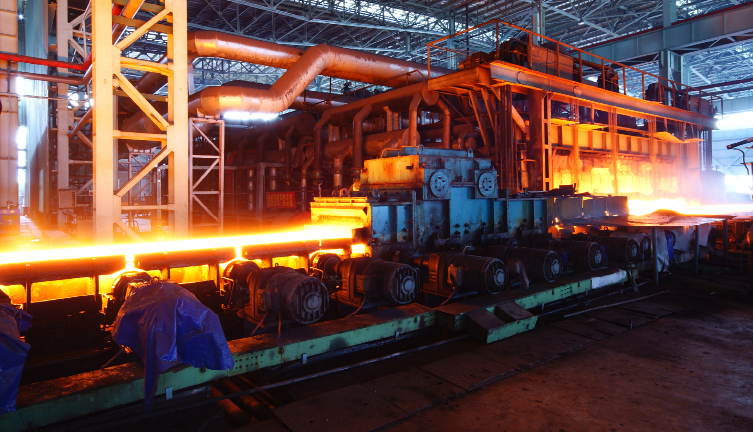
Since the North American Free Trade Agreement (NAFTA) among the United States,
Trade associations representing the steel sector in all three nations released a joint statement in June 2017 that declared, “NAFTA has provided significant benefits to [the] U.S., Canadian and Mexican steel industries.”
The Washington-based American Iron and Steel Institute (AISI), the Canadian Steel Producers Association (CSPA), CANACERO (the Mexican steel association) and two other trade associations also said NAFTA had “resulted in strengthened North American manufacturing supply chains, especially with key customer groups like the North American automotive industry. It has contributed to increases in exports [and] investments and helped the steel industry remain globally competitive.”
Nonetheless, the Trump administration is opening the agreement to renegotiation, and even the five trade groups have offered recommendations for “upgrading” NAFTA.
How or if the steel industry will be affected by changes to NAFTA remains unseen, but the potential for change is significant, considering how steelmakers from all three countries—and their customers and suppliers—have increasingly operated across borders in the past 25 years.
Near and far
In a presentation to the American Institute of Steel Technology (AIST) in Monterey, Mexico, in June 2017, Becky Hites of Pittsburgh-based Steel-Insights LLC provided an overview of the ways the North American steel industry has changed in the NAFTA era.
One of the more significant changes, Hites said, has been the ongoing reduction in integrated steelmaking—continuing a trend that had started before NAFTA.
Using 1990 as a baseline year (two years before NAFTA), Hites said more than 50 million tons of (largely blast-furnace-based) integrated steelmaking had been idled in the three countries. Although the closures were spread out, the peak decade for idled capacity was from 2000 to 2009, when more than 20 million tons of capacity
In the U.S., the impacts of imported steel have long been cited as a reason for mill closures, though in recent decades the AISI and other groups seem to have increasingly considered NAFTA partners exempt from this criticism.
In its monthly summaries of U.S. imported steel data, AISI does not separately list finished steel import figures for Mexico or Canada, as it does for nations in Asia and on other continents.
In AISI’s press release covering January through May 2017, South Korea, which shipped 1.53 million metric tons of steel to the U.S. during that time, sits atop the list of largest exporters. A collection of nations labeled “all other,” which presumably includes Mexico and Canada, shipped 12 million metric tons of steel to the U.S. in that same five-month span.
In March 2017 the amount of finished or
Following those two nations as steel shippers into the U.S. were Brazil, South Korea,
Yet in an August 2017 statement, Kevin Dempsey, AISI senior vice president for public policy, writes, “The biggest trade-related challenges the industry faces are with countries with which the U.S. does not have a free trade agreement (FTA). China, in particular, continues to subsidize and implement other market-distorting policies and practices that have fueled the massive and growing global excess capacity in steel.”
Dempsey accused governments in other countries as having followed the Chinese model, implementing what he called interventionist policies to benefit their domestic industries.
“These market-distorting foreign government trade policies continue to put pressure on global steel markets and have led to surges in foreign steel imports,” he writes. “This has contributed to thousands of lost American jobs in the steel industry and in the communities the steel industry supports.”
Despite AISI saying NAFTA has “resulted in strengthened North American supply chains” and Dempsey pointing to China and other overseas nations as culprits, as of the fall of 2017, NAFTA remains a focus for the Trump administration.
In her presentation, “Tweet, tweet, tweet: Which direction will the steel bird fly?” Hites offered her views on “rhetoric versus reality” in the NAFTA renegotiation process and how it might affect the steel industry.
Agreeing to agree
NAFTA is one of several trade agreements Mexico has signed onto in the past three decades, and according to
In addition to NAFTA, Mexico has had an FTA with Brazil since 2001 and is part of 10 FTAs involving 45 nations. Manufacturing in Mexico has prospered as a result, Hites said, with output having grown at a 3.2 percent compound annual rate in the last five years.
Some of that manufacturing growth has been in the automotive sector, where “motor vehicle production has flourished as auto companies have located and expanded production facilities in Mexico,” she said. “The auto sector makes up 30 percent of Mexico’s total exports.”
The overall manufacturing sector and economic growth in Mexico
While trade associations on K Street may not refer to it, Hites said undocumented immigration ties into some of President Trump’s views on how NAFTA has failed the United States.
As NAFTA was being approved in the early 1990s, “the goal of all three countries was stronger and steadier economic growth in Mexico, providing new jobs for a growing workforce and reducing the allure of illegal migration north,” Hites said.
Although the flow of undocumented immigrants from Mexico to the U.S. started slowing this decade, “Clearly this objective was not achieved satisfactorily” in the eyes of many voters, she said.
In the minds of many Trump
North American steelmakers seem to be positioning themselves to remain unified within NAFTA and on protecting all three nations from unfair trade practices emanating from outside the continent.
Hites said the five North American steel associations that released the joint statement “have urged their respective governments to strengthen the rules and ensure that NAFTA products are made from steel produced within NAFTA.”
She added, “According to our contacts, the Servicio de Administración Tributaria has already begun audits ensuring that documentation for every component going into final assembled products
More to melt
Scrap recyclers likely can see both threats and opportunities if considerable changes are made to NAFTA.
One recycler with operations in Texas and Mexico, when asked in February 2017 about the newly installed Trump administration and its expressed opposition to NAFTA, simply said, “I would rather stay neutral on presidential policies and not comment on political agendas.”
Ferrous scrap recyclers in Texas likely have more at stake than those in most other parts of the country. Hites said, “The trade relationship between Texas and Mexico is worth nearly $200 billion per year,” and that “more than one-third of Texas’ exports go to Mexico, more than three times the next leading destination.”
NAFTA as currently configured means recyclers in Texas and other states within advantageous freight range can supply ferrous scrap to Mexico’s growing steel industry, which is heavily invested in electric arc furnace (EAF) production. According to Hites, who cited CANACERO statistics, more than 14 million tons of the steel produced in Mexico in 2015 was via the EAF route compared with about 6 million tons of basic oxygen furnace (BOF) output.
Trade data gathered by the Census Bureau U.S. Department of Commerce and published by the U.S. Geological Survey (USGS) show the Texas-Mexico connection specific to steel and scrap is strong.
In the first five months of 2017, Mexico was behind only Turkey as a destination for ferrous scrap from the U.S. In those five months, some 718,000 metric tons of ferrous scrap valued at $189 million were shipped from the U.S. to Mexico.
Pertinent to Texas, Census Bureau data show the Laredo and Houston-Galveston customs districts as the busiest in the Gulf Coast region for ferrous scrap, shipping 308,000 metric tons (64.3 percent) of the 479,000 metric tons that left the region.
With NAFTA

Explore the November 2017 Issue
Check out more from this issue and find you next story to read.
Latest from Recycling Today
- Bridgestone introduces retreating plant virtual tour
- USTMA announces Tire Recycling Foundation
- Dow announces agreement with Freepoint and MOU for Asia Pacific market with SCGC
- Mixed signals chracterize ferrous market
- Researchers look into ironing out a secondary aluminum limitation
- Analysis: Chemical recycling’s ‘inflection point’ nearing
- Machinex system in Québec targets organics diversion
- Northern Shenandoah region awarded $3.9M for recycling infrastructure





